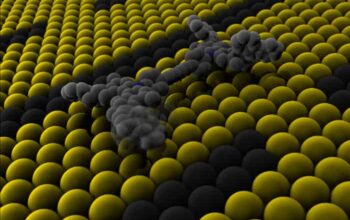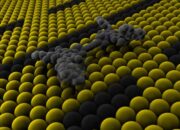In the realm of quantum physics, an intriguing paradigm shift has emerged, positing that alterations in temperature and the rate of particle movement can significantly influence the behavior of quantum systems. The phrase “Colder, Slower, Better” encapsulates the essence of recent advancements in experimental techniques that employ cryogenic temperatures and subdued velocities to enhance the fidelity and precision of quantum experiments. This article aims to elucidate these phenomena, exploring the underlying principles, the methodologies employed, and the far-reaching ramifications of such approaches in both theoretical and applied physics.
The foundation of quantum experiments rests upon the manipulation of particles at their most fundamental levels. Quantum systems are inherently fragile, susceptible to environmental perturbations that can induce decoherence—a phenomenon where quantum states lose their coherent properties due to interactions with external systems. One of the paramount strategies developed to mitigate decoherence is the implementation of lower temperatures, which can effectively reduce thermal noise. Cooling atoms to near absolute zero allows for more prolonged observation periods and leads to more stable quantum states, thereby enabling precise measurements without the interference typically associated with thermal agitation.
A prominent methodology for achieving such temperatures is the technique of laser cooling. Through the use of finely tuned laser light, particles can be slowed and ultimately trapped in a state of ultra-cold equilibrium. The interaction between the atoms and photons results in a transfer of momentum, which reduces the kinetic energy of the particles. Consequently, laser cooling not only reduces the temperature but also enriches the coherence time of the quantum systems under observation.
Another innovative approach employs evaporative cooling, similar in principle to the process that occurs in a cup of hot coffee. In this technique, the most energetic particles are allowed to escape from a trapped group of atoms, leading to a reduction in the average energy of the remaining particles. As the system undergoes expansion, the remaining atoms attain significantly lower temperatures. The resultant ultra-cold ensemble present in these experiments allows physicists to observe intriguing quantum behaviors, such as Bose-Einstein condensation, where particles behave not as individual entities but rather as a collective quantum state.
The impact of cooler environments on quantum experiments extends beyond mere temperature considerations; it profoundly influences the dynamical interactions dictated by quantum mechanics. At lower temperatures, systems can exhibit fascinating phenomena such as quantum tunneling—a process where particles traverse barriers that classical physics would deem insurmountable. As atomic motion is curtailed, the probabilistic nature of quantum mechanics becomes pronounced, yielding insights into the wave-particle duality that lies at the heart of quantum phenomena.
As experiments progress towards increasingly slower particle movements, researchers are discovering that this deceleration offers another critical advantage: it enhances the ability to manipulate quantum states with heightened fidelity. The interplay between slower velocities and external manipulation techniques—such as electromagnetic fields—enables finer control over quantum states, facilitating the execution of complex quantum operations essential for quantum computing and quantum information processing.
Quantum computing, an area poised to revolutionize the technological landscape, inherently depends on quantum bits, or qubits, which exhibit superposition and entanglement. As physicists delve deeper into the effects of reduced temperatures and slower movements, they uncover strategies to create more reliable qubits that are less prone to errors. This enhances the viability of quantum algorithms and paves the way for scalable quantum architectures capable of solving problems intractable for classical computers.
Moreover, the benefits of “Colder, Slower, Better” extend into quantum simulation, where physicists utilize ultra-cold atoms to model complex quantum systems that are difficult to study through conventional means. By emulating condensed matter systems, researchers can gain insights into high-temperature superconductivity, quantum phase transitions, and other exotic states of matter. These simulations not only facilitate a deeper understanding of fundamental principles but also have implications for developing new materials and technologies with unprecedented properties.
As the field evolves, the implications of employing colder and slower experimental conditions resonate beyond theoretical physics—crossing disciplinary boundaries into chemistry, materials science, and engineering. The insights gleaned from these quantum experiments hold promise for devising innovative technologies, including advanced sensors, quantum communication systems, and energy efficient materials. Furthermore, the mechanisms underlying quantum phenomena elucidated through these experiments can inspire novel methodologies across diverse scientific domains.
Looking ahead, the future of quantum experimentation seems boundless. The continued exploration of “Colder, Slower, Better” will likely yield a trove of new revelations in physics, offering a richer tapestry of knowledge that intertwines various facets of the natural world. As researchers push the boundaries of what is possible, one is reminded that the subtle dance of particles at the quantum level is not only a wellspring of theoretical intrigue but also a catalyst for transformative advancements in technology and society.
In summary, the principle of chilling systems and slowing particles illustrates how nuanced adjustments can lead to profound enhancements in our understanding of quantum phenomena. Through innovative cooling techniques and the corresponding enhancement of experimental fidelity, physicists are not just solving problems—they are reshaping the landscape of knowledge, illuminating the pathways to a future built on the bedrock of quantum mechanics.










